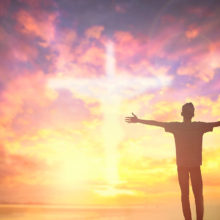The 13 Most Remote Islands In The World
From the beautiful to the downright bleak, these are the most remote places on earth. Inspired by the Pocket Atlas of Remote Islands by Judith Schalansky.
The southernmost island in the Svalbard archipelago, Bear Island is so bleak its highest peak is called Miseryfjellet. It spans 178 sq km but has no full-time residents apart from the handful of people who man its weather station.
The most remote part of the British Isles, St Kilda, itself an archipelago, is 60km west of Harris, in the Outer Hebrides, and 160km away from mainland Scotland. It’s been uninhabited since it was abandoned by 36 islanders in 1930 after struggles with illness and food shortages, leaving behind eerie empty cottages and streets.
Tristan da Cunha’s capital is called Edinburgh of the Seven Seas – but the name is the only thing one of the most isolated communities in the world shares with its urbanised, cultured namesake.
Lying 2,770km from the Cape of Good Hope, the island contains 29 souls who battle the harsh conditions all year round. But at least there’s a UK postcode, TDCU 1ZZ, which means they can order things from Amazon.
A shoutout also to the wonderfully named Inaccessible Island, which is 45km to the south-west.
4. South Keeling/Cocos Islands (Australia)
en.wikipedia.org(Keeling)_Islands#mediaviewer/File:Cocos_Island_Atoll.JPG / Creative Commons
Flickr: aussieskibum / Creative Commons
More than 1,000km away from Java and 2,000km from Australia, this collection of 27 coral atolls and two islands has a combined population of no more than 600.
After Charles Darwin landed here on the HMS Beagle, he wrote: “I am glad we have visited these islands: such formations surely rank as the most wonderful objects of this world.”
5. Tromelin (France)
Tromelin, a tiny French-owned island 450km east of Madagascar and no more than 7 metres above sea level, hides a tragic past, as Judith Schalansky writes. In 1760, an East India Company ship, the Utile, was shipwrecked there en route to Malaysia. After two months, the 120 French sailors had built a boat, set sail and were never seen again.
The 60 slaves who arrived with them, however, stayed behind. Some 15 years later, when a ship arrived to rescue them, just seven women and a baby remained.
Easter Island, or Rapa Nui, isn’t somewhere you visit unless you really want to go there – it’s one of the most remote islands in the world, lying 3,600km from the Chilean mainland.
There are 887 mysterious maoi statues, each weighing about 14 tons, some of which were re-erected after being toppled by warring groups on the island. It’s thought there may have been 20,000 native islanders there at one point – but after war, disease, and deforestation that number fell to 3,000.
These islands have about 50 permanent inhabitants yet they also have their own internet top-level domain, .pn, and their own website. The hardy islanders are the descendants of the mutineers from a merchant ship who arrived in 1790 and their Tahitian companions.
New Zealand’s Department of Conservation sends a manual to the volunteers who go to the island to assist the conservationists there for up to six months a year: “It takes a special person to cope with living on an island as remote as Raoul. …
“The area is actively volcanic and earthquakes are a regular fact of life. The terrain is very steep and rugged.”
Part of the Galapagos Islands, Floreana has a 100-strong population and is 1,000km from Ecuador. There is one hotel and one phone on the island.
If you like penguins, you’d love it on Macquarie Island. But you’ll have to travel 1,070km from New Zealand to get there. Halfway to Antarctica, it’s controlled by the government of Tasmania and was made a World Heritage site in 1997. There are no more than 40 people living there at any one time.
Anthropologist Richard Moyle from the University of Auckland, who studied families on Takuu, a string of islets 200km east of Bougainville, said in 2005 that the atoll community would not sustain human life for much longer due to rising sea levels, meaning that Takuu culture could die out.
“Takuu families living elsewhere in Papua New Guinea will take in as many as they can,” he said, “but with no single resettlement location, I can’t see Takuu continuing to function as a community.”
If Alaska isn’t remote enough for you, try the Pribilof Islands. St George Island’s 112 souls is one of the biggest communities of Aluet people.
But it’s really run by the 2.5 million seabirds and hordes of seals. There’s not much else, other than “treeless, tundra-covered hills”.
This independent island nation has 1,300 inhabitants and is in “free association” with New Zealand, from which it is a 2,400km journey.
Since 2003, the island has provided free Wi-Fi, and in 2001 it introduced coins featuring Pokémon characters that are legal tender. The government there is hiring.
All but one of the islands here feature in the Atlas of Remote Islands, by Judith Schalansky, published by Penguin.
Read more: http://www.buzzfeed.com/patricksmith/13-of-the-worlds-loneliest-islands-you-will-never-visit







